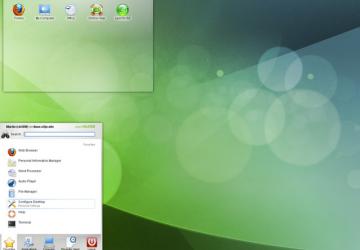Spotlight on Linux: openSUSE 11.3

openSUSE began its life in 1994 in Germany as SuSE Linux and was based on Slackware Linux. It was a commercial offering, and although it adhered to the letter of the GPL, it wasn't easy for desktop users to download and install. Novell bought SuSE in 2004 and opened it up for community participation and enjoyment in August 2005. From then on, users could download and easily install the now-dubbed openSUSE. openSUSE earned lots of attention and happy users until its controversial patent agreement with Microsoft, but openSUSE slowly has been regaining some lost ground ever since.
The distribution is always of the highest quality with a professional feel and polish. Novell employs full-time developers to work on openSUSE and community projects, because many of the innovations first seen in openSUSE will end up in Novell's commercial SUSE Enterprise edition. Novell has a vigorous testing routine, ensuring that most bugs are eliminated. As a result, openSUSE is truly one of the leading and best distributions in Linux today.
The distribution itself is rock stable, features plenty of software and includes one of the best control centers in existence. New releases, seen about every 6 to 12 months, usually come in 32- and 64-bit versions with a choice of exhaustive install DVD or desktop-specific installable live CDs. It uses the RPM package management format and maintains large repositories of software. Community repos include proprietary drivers, codecs and extra software.
The YaST Control Center is the central hub for configuring and customizing your openSUSE system as well as installing or removing software. From it, you can setup a firewall, configure boot and login options, set up a virtual environment, edit partitions, set up hardware and network configurations, customize AppArmor settings and much more. Its only rival is perhaps Mandriva's Control Center.
Version 11.3 was released on July 15 and has been met with overwhelmingly positive reviews. It ships with Linux 2.6.34, Xorg X Server 1.8.0, GCC 4.5, KDE 4.4.4, GNOME 2.30, Xfce 4.6.1 and LXDE 0.5.5. It even includes a preview of GNOME 3.0. Its software includes OpenOffice.org 3.2.1, Mozilla Firefox 3.6.6, GIMP 2.6.8, plus many extras like support for the new Btrfs and a variety of Netbooks. Nouveau is the new default NVIDIA graphic driver. Upstart and Grub2 are two experimental options. Users might even opt for the newly included MariaDB in lieu of MySQL. This release has been described as impressive, fast, stable, polished and kick {posterior}. In other words, this is another great release.
Some advantages of openSUSE are a professionally crafted rock-solid system, a large and helpful community, handy community extras, regular updates and new releases, and commercial support available (with SLED). Disadvantages are having to use the community packages or install proprietary drivers and certain multimedia codecs yourself, and the agreement with Microsoft still leaves a bad taste in some people's mouths.
It's hard to find another Linux distribution equal to openSUSE. Many try, but most fail. It's an excellent choice for any level of user from beginner to developer.










